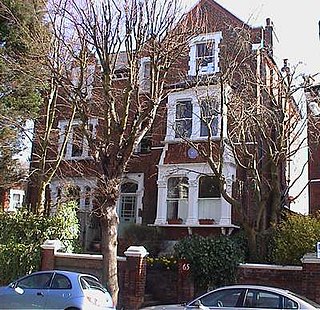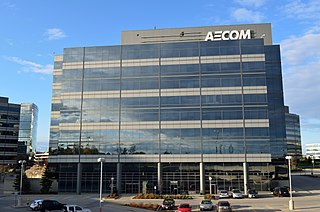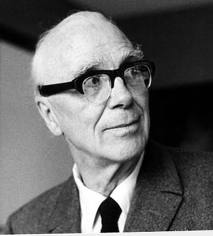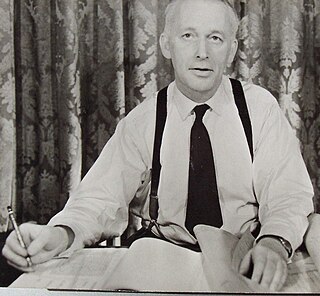Oscar Faber CBE MICE MIMechE (5 July 1886 – 7 May 1956) was a British structural engineer. He was influential in the development of the use of reinforced concrete in the United Kingdom. Because many engineers were not certain of the material, Faber pioneered simple deflection tests, which enabled him to develop his theory of ‘Plastic yield in concrete’, and to calculate shear in reinforced concrete beams.
Structural engineers analyze, design, plan, and research structural components and structural systems to achieve design goals and ensure the safety and comfort of users or occupants. Their work takes account mainly of safety, technical, economic and environmental concerns, but they may also consider aesthetic and social factors.

Reinforced concrete (RC) (also called reinforced cement concrete or RCC) is a composite material in which concrete's relatively low tensile strength and ductility are counteracted by the inclusion of reinforcement having higher tensile strength or ductility. The reinforcement is usually, though not necessarily, steel reinforcing bars (rebar) and is usually embedded passively in the concrete before the concrete sets. Reinforcing schemes are generally designed to resist tensile stresses in particular regions of the concrete that might cause unacceptable cracking and/or structural failure. Modern reinforced concrete can contain varied reinforcing materials made of steel, polymers or alternate composite material in conjunction with rebar or not. Reinforced concrete may also be permanently stressed, so as to improve the behaviour of the final structure under working loads. In the United States, the most common methods of doing this are known as pre-tensioning and post-tensioning.

The United Kingdom (UK), officially the United Kingdom of Great Britain and Northern Ireland, and sometimes referred to as Britain, is a sovereign country located off the north-western coast of the European mainland. The United Kingdom includes the island of Great Britain, the north-eastern part of the island of Ireland, and many smaller islands. Northern Ireland is the only part of the United Kingdom that shares a land border with another sovereign state, the Republic of Ireland. Apart from this land border, the United Kingdom is surrounded by the Atlantic Ocean, with the North Sea to the east, the English Channel to the south and the Celtic Sea to the south-west, giving it the 12th-longest coastline in the world. The Irish Sea lies between Great Britain and Ireland. With an area of 242,500 square kilometres (93,600 sq mi), the United Kingdom is the 78th-largest sovereign state in the world. It is also the 22nd-most populous country, with an estimated 66.0 million inhabitants in 2017.
Faber was born in London, the son of the Danish Commissioner of Agriculture in London. His work for Trollope & Colls on non-magnetic mine casings during the First World War earned him the OBE in the 1918 Birthday Honours. [1]

Agriculture is the science and art of cultivating plants and livestock. Agriculture was the key development in the rise of sedentary human civilization, whereby farming of domesticated species created food surpluses that enabled people to live in cities. The history of agriculture began thousands of years ago. After gathering wild grains beginning at least 105,000 years ago, nascent farmers began to plant them around 11,500 years ago. Pigs, sheep and cattle were domesticated over 10,000 years ago. Plants were independently cultivated in at least 11 regions of the world. Industrial agriculture based on large-scale monoculture in the twentieth century came to dominate agricultural output, though about 2 billion people still depended on subsistence agriculture into the twenty-first.

London is the capital and largest city of both England and the United Kingdom. Standing on the River Thames in the south-east of England, at the head of its 50-mile (80 km) estuary leading to the North Sea, London has been a major settlement for two millennia. Londinium was founded by the Romans. The City of London, London's ancient core − an area of just 1.12 square miles (2.9 km2) and colloquially known as the Square Mile − retains boundaries that follow closely its medieval limits. The City of Westminster is also an Inner London borough holding city status. Greater London is governed by the Mayor of London and the London Assembly.
Trollope & Colls was once one of the United Kingdom's largest construction companies.
He set up as an independent consultant at the age of 35 in 1921, with £2000 capital, in Finsbury Circus, City of London. The firm comprised 2 engineers, an office junior and a typist. This was to grow to become Oscar Faber and Partners. [2]
Notable projects include the Bank of England, the House of Commons, Africa House and India House in London. He co-authored the book, Reinforced Concrete Design, with P.G. Bowie, which became a standard work. Faber's work on rebuilding the House of Commons won him a CBE in 1951. [1] He also worked on the Snow Hill, Bath, re-development scheme - 11-storey block of 56 maisonettes opened by Alderman Sam Day in March 1958 - in association with architects Snailum, Huggins and Lefevre.

The Bank of England is the central bank of the United Kingdom and the model on which most modern central banks have been based. Established in 1694 to act as the English Government's banker, and still one of the bankers for the Government of the United Kingdom, it is the world's eighth-oldest bank. It was privately owned by stockholders from its foundation in 1694 until it was nationalised in 1946.

The House of Commons, officially the Honourable the Commons of the United Kingdom of Great Britain and Northern Ireland in Parliament assembled, is the lower house of the Parliament of the United Kingdom. Like the upper house, the House of Lords, it meets in the Palace of Westminster. Owing to shortage of space, its office accommodation extends into Portcullis House.

India House was a student residence that existed between 1905 and 1910 at Cromwell Avenue in Highgate, North London. With the patronage of lawyer Shyamji Krishna Varma, it was opened to promote nationalist views among Indian students in Britain. This institute used to grant scholarships to Indian youths for higher studies in England. The building rapidly became a hub for political activism, one of the most prominent for overseas revolutionary Indian nationalism. "India House" came to informally refer to the nationalist organisations that used the building at various times.
Faber was president of the Institution of Structural Engineers between 1935 and 1936. The Institution named an award after him, the Oscar Faber Medal, one of which was presented to Fazlur Khan in 1973. [1]

The Institution of Structural Engineers is a professional body for structural engineering based in the United Kingdom. It has 27,000 members operating in 105 countries. The Institution provides professional accreditation for structural engineers. It publishes a monthly magazine, The Structural Engineer. The institution also has a research journal titled Structures,published by Elsevier, Inc.
Faber's company Oscar Faber & Partners eventually merged with G Maunsell & Partners to become Faber Maunsell. In 2009, Faber Maunsell was rebranded AECOM.
Guy Anson Maunsell was the British civil engineer responsible for the design of the World War II Naval sea forts and Army forts used by the United Kingdom for the defence of the Thames and Mersey estuaries.

AECOM is an American multinational engineering firm that provides design, consulting, construction, and management services to a wide range of clients.







